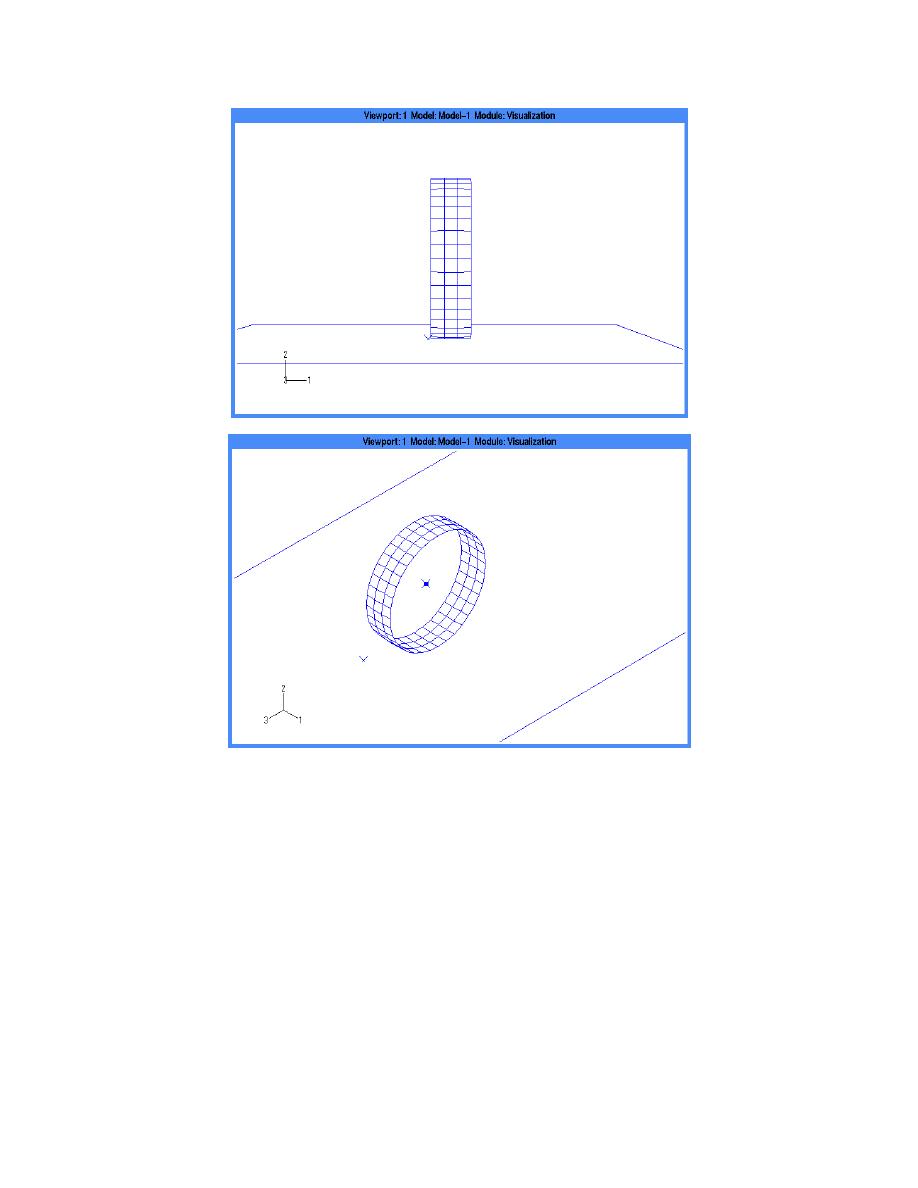
a. Coarse (3 36) mesh.
Figure 42. ShoopDarnell tire model (user elements not shown).
then a plasticity model for the terrain material. Two
The ShoopDarnell model (the model of the test
ShoopDarnell mesh configurations were used in the
tire created with the Darnell methodology) was con-
analysis: a coarse and a fine mesh (Fig. 42). Since the
structed using ABAQUS for a quasi-static simulation.
sidewalls are modeled with user-defined elements,
This adequately simulates low-speed vehicle travel
they do not appear on the standard finite element
and is appropriate for 5 mph, which is the standard
visualization.
test speed for off-road traction and motion resistance
testing. The tire model is first subjected to internal
Modal analysis tire model: Smooth tread
pressure (inflated), then lowered onto the surface and
The smooth tread tire model is typical of the type
allowed to equilibrate with the applied vertical load
of models used for tire vibration modal analysis. The
before rolling. The Darnell methodology for the tire
carcass is composed of a single layer of four-node,
model was validated for the test tire on a hard surface
reduced-integration shell elements (S4R) with mate-
and then used to simulate the three-dimensional con-
rial properties representing the composite behavior
tact between two deformable bodies on a homogene-
through the carcass thickness. The treadcap is con-
ous terrain, first using an elastic terrain model and
30



 Previous Page
Previous Page
